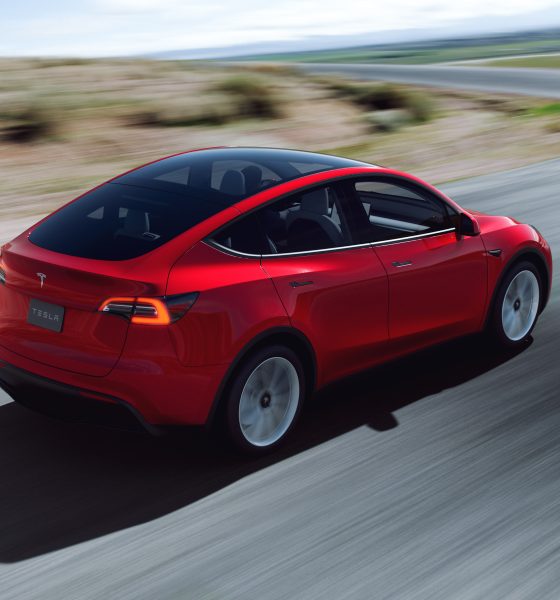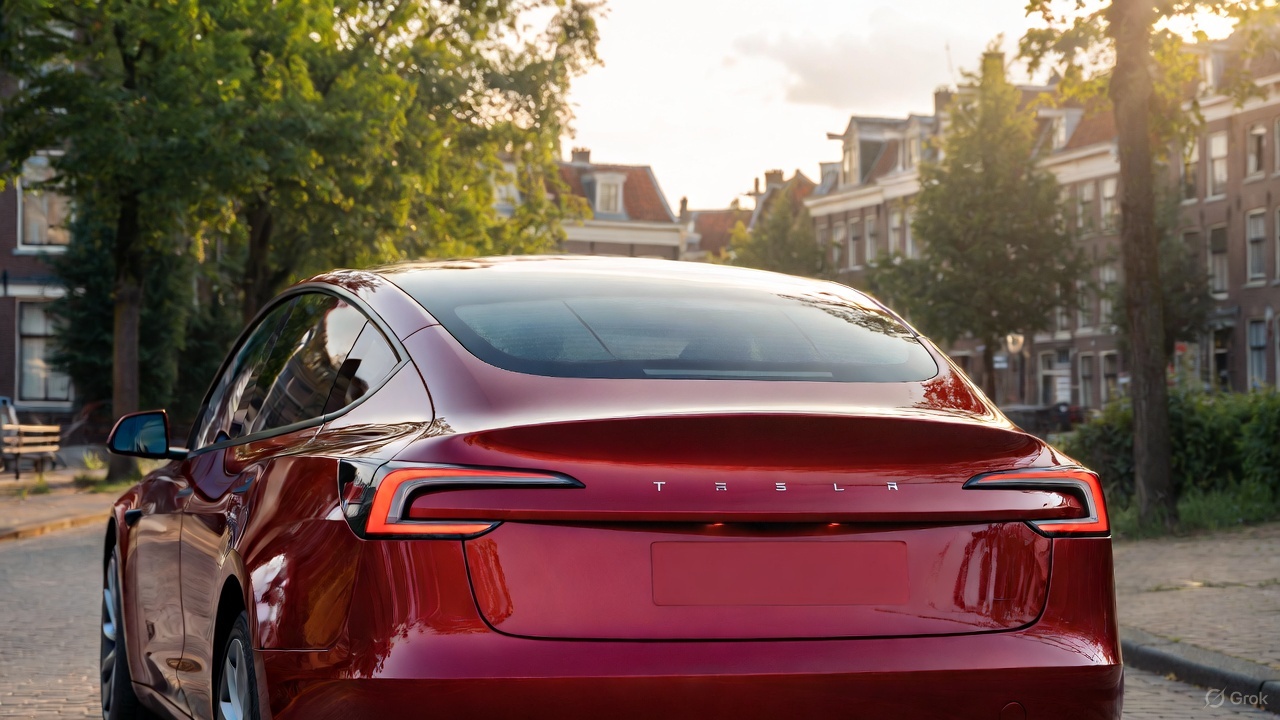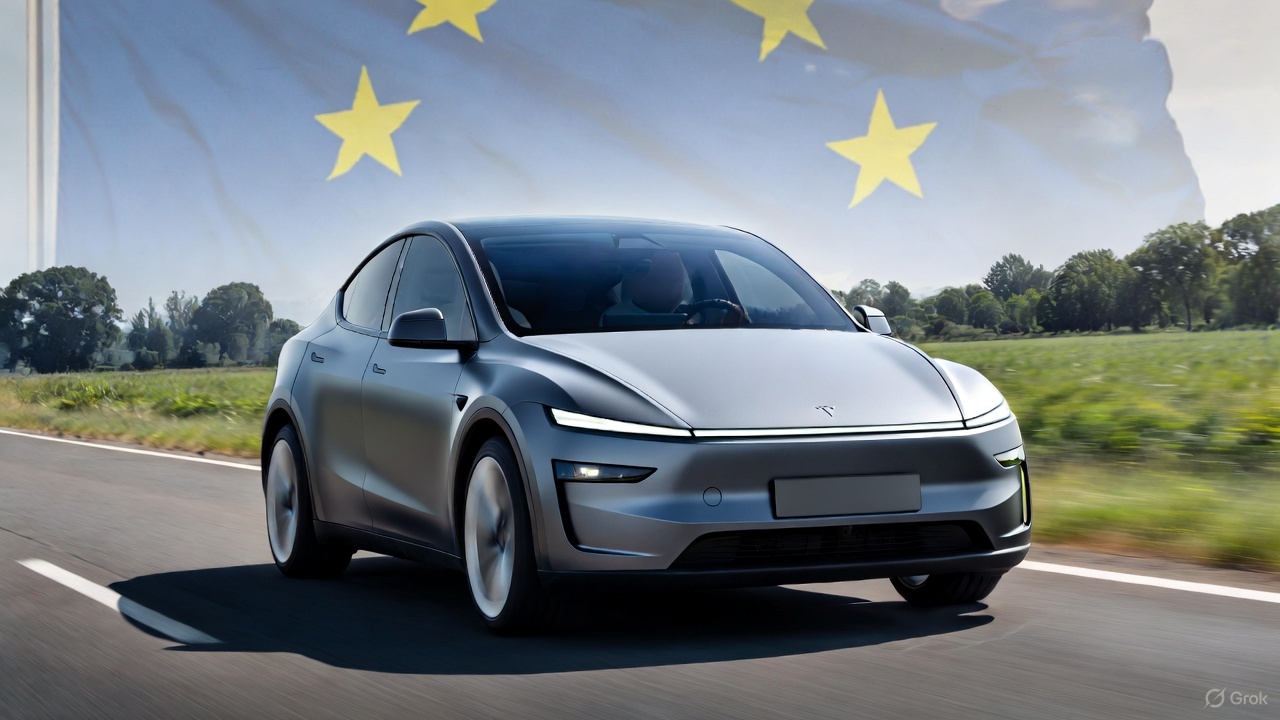

News
Tesla’s launch of Model Y RWD is the nail in the coffin at the worst time for legacy auto
Tesla’s launch of the Model Y Rear-Wheel-Drive (RWD) comes at perhaps the worst time for legacy automotive companies. It is affordable, comparable to similar models from competitors, and is perhaps the nail in the coffin, especially for the U.S. market, as it is an affordable car that features some of the best add-ons that EV buyers could need.
Last night, Tesla launched the Model Y RWD on its website, and with federal and local incentives, it could cost buyers under $31,000 as it qualifies for the full EV tax credit from the government. Packing the LFP, or lithium iron phosphate battery pack, Tesla has brought its most popular car to an affordable level with reasonable range ratings and more than acceptable performance metrics.
While it was a timely offering in terms of Tesla’s trek for 1.8 million deliveries this year after a lackluster Q3 due to factory upgrades that required production pauses, this vehicle offers the automaker two things:
- A new mode of demand for the Model Y, especially in the U.S. market, where it has already been extremely popular
- Another edge over the already-frustrated competition, which is falling further behind due to a number of factors, and has already thrown in the towel to Tesla and will use its Superchargers next year because developing infrastructure is difficult
Of course, the Model Y RWD is not the best crossover out there. We would likely reserve this for the Long Range version of the Model Y, which offers more travel distance per charge and better performance metrics.
That’s not to say that the Model Y RWD is something worth overlooking because, for many, it is the answer to the question they’ve had: how will I put the most popular EV in the U.S. in my driveway for roughly $35,000?
This was Tesla’s answer.
Obviously, there is no shortage of people who are at least thinking about buying an EV. Recent figures have shown that Tesla commands the U.S. EV market by a considerable margin, and although it seems there is still plenty of demand for its vehicles in the North American market, Tesla still has to find ways to cater to customers who need certain vehicles at certain price points.
The Long Range Model Y is an ideal car for most people and families. Crossovers are an extremely sought-after body style in this market, but they come at a price. Give someone who needs a crossover EV at a price they cannot pass up and pack on the world’s most expansive charging network on top of it, and it is simply not a matter of whether people will buy it. It’s a matter of when, and how many will be bought.
It is no secret that people may be somewhat worried that Tesla may not reach its 1.8 million unit delivery goal for the year. Even with the Model 3+, or Highland, whatever you want to call it, starting deliveries this month in Europe, Asia, and the Middle East and the Cybertruck likely beginning deliveries soon, there still needs to be some movement in the U.S. market.
Cybertruck deliveries are likely going to be somewhat small for the last quarter of the year, and Highland will contribute plenty of units to the Q4 figures, but the U.S. is still where Tesla dominates the most, but neither of these vehicles are available here yet.
Enter the Model Y RWD as the nail in the coffin for companies that are either striking due to UAW demands for better wages and benefits, or are struggling with EV software and quality, or just an overall lack of awareness in terms of the auto market.
Yes, there are some people out there that have no interest in an EV. However, there are plenty that are. Ford, GM, and Stellantis are not building any in the U.S. currently because of the UAW strike, Volkswagen may have some things to offer, but it hasn’t chosen to adopt the NACS charging connector to gain access to the Supercharger network. Hyundai is still early in its EV venture, and the IONIQ is certainly an attractive option, but the Model Y RWD will trump it because of its price and Tesla’s overall advantages, including charging and overall EV prowess.
We have talked plenty about nails in the coffin for EV makers before, but with a new demand trigger with the Model Y RWD for Tesla and Detroit pausing EV production while the terms of a new UAW contract get worked out, this is spelling nothing but trouble for Tesla’s competitors.
The Model Y RWD has opened a new can of worms for competitors to try and combat. Right now, at least in the U.S., it’s Tesla’s world, and competitors are just living in it.
I’d love to hear from you! If you have any comments, concerns, or questions, please email me at joey@teslarati.com. You can also reach me on Twitter @KlenderJoey, or if you have news tips, you can email us at tips@teslarati.com.

News
Tesla backtracks on strange Nav feature after numerous complaints

Tesla is backtracking on a strange adjustment it made to its in-car Navigation feature after numerous complaints from owners convinced the company to make a change.
Tesla’s in-car Navigation is catered to its vehicles, as it routes Supercharging stops and preps your vehicle for charging with preconditioning. It is also very intuitive, and features other things like weather radar and a detailed map outlining points of interest.
However, a recent change to the Navigation by Tesla did not go unnoticed, and owners were really upset about it.
For trips that required multiple Supercharger stops, Tesla decided to implement a naming change, which did not show the city or state of each charging stop. Instead, it just showed the business where the Supercharger was located, giving many owners an unwelcome surprise.
However, Tesla’s Director of Supercharging, Max de Zegher, admitted the update was a “big mistake on our end,” and made a change that rolled out within 24 hours:
The naming change should have happened at once, instead of in 2 sequential steps. That was a big miss on our end. We do listen to the community and we do course-correct fast. The accelerated fix rolled out last night. The Tesla App is updated and most in-car touchscreens should…
— Max (@MdeZegher) November 20, 2025
The lack of a name for the city where a Supercharging stop would be made caused some confusion for owners in the short term. Some drivers argued that it was more difficult to make stops at some familiar locations that were special to them. Others were not too keen on not knowing where they were going to be along their trip.
Tesla was quick to scramble to resolve this issue, and it did a great job of rolling it out in an expedited manner, as de Zegher said that most in-car touch screens would notice the fix within one day of the change being rolled out.
Additionally, there will be even more improvements in December, as Tesla plans to show the common name/amenity below the site name as well, which will give people a better idea of what to expect when they arrive at a Supercharger.
News
Dutch regulator RDW confirms Tesla FSD February 2026 target
The regulator emphasized that safety, not public pressure, will decide whether FSD receives authorization for use in Europe.

The Dutch vehicle authority RDW responded to Tesla’s recent updates about its efforts to bring Full Self-Driving (Supervised) in Europe, confirming that February 2026 remains the target month for Tesla to demonstrate regulatory compliance.
While acknowledging the tentative schedule with Tesla, the regulator emphasized that safety, not public pressure, will decide whether FSD receives authorization for use in Europe.
RDW confirms 2026 target, warns Feb 2026 timeline is not guaranteed
In its response, which was posted on its official website, the RDW clarified that it does not disclose details about ongoing manufacturer applications due to competitive sensitivity. However, the agency confirmed that both parties have agreed on a February 2026 window during which Tesla is expected to show that FSD (Supervised) can meet required safety and compliance standards. Whether Tesla can satisfy those conditions within the timeline “remains to be seen,” RDW added.
RDW also directly addressed Tesla’s social media request encouraging drivers to contact the regulator to express support. While thanking those who already reached out, RDW asked the public to stop contacting them, noting these messages burden customer-service resources and have no influence on the approval process.
“In the message on X, Tesla calls on Tesla drivers to thank the RDW and to express their enthusiasm about this planning to us by contacting us. We thank everyone who has already done so, and would like to ask everyone not to contact us about this. It takes up unnecessary time for our customer service. Moreover, this will have no influence on whether or not the planning is met,” the RDW wrote.
The RDW shares insights on EU approval requirements
The RDW further outlined how new technology enters the European market when no existing legislation directly covers it. Under EU Regulation 2018/858, a manufacturer may seek an exemption for unregulated features such as advanced driver assistance systems. The process requires a Member State, in this case the Netherlands, to submit a formal request to the European Commission on the manufacturer’s behalf.
Approval then moves to a committee vote. A majority in favor would grant EU-wide authorization, allowing the technology across all Member States. If the vote fails, the exemption is valid only within the Netherlands, and individual countries must decide whether to accept it independently.
Before any exemption request can be filed, Tesla must complete a comprehensive type-approval process with the RDW, including controlled on-road testing. Provided that FSD Supervised passes these regulatory evaluations, the exemption could be submitted for broader EU consideration.
News
Tesla says Europe could finally get FSD in 2026, and Dutch regulator RDW is key
As per Tesla, a Dutch regulatory exemption targeted for February 2026 could very well be the key gateway for a Europe-wide rollout of FSD.

Tesla has shared its most detailed timeline yet for bringing Full Self-Driving (Supervised) to Europe. The electric vehicle maker posted its update through the official X account of Tesla Europe & Middle East.
As per Tesla, a Dutch regulatory exemption targeted for February 2026 could very well be the key gateway for a Europe-wide rollout of FSD.
Tesla pushes for EU approval
Tesla stated that it has spent more than 12 months working directly with European authorities and delivering FSD demonstrations to regulators in several EU member state. Tesla highlighted a number of its efforts for FSD’s release in Europe, such as safety documentation for FSD, which is now included in its latest public Safety Report, and over 1 million kilometers of internal testing conducted on EU roads across 17 countries.
To unlock approval, Tesla is relying on the Netherlands’ approval authority RDW. The process requires proving compliance with UN-R-171 for driver-assist systems while also filing Article 39 exemptions for behaviors that remain unregulated in Europe, such as hands-off system-initiated lane changes and Level 2 operation on roads that are not fully covered by current rules. Tesla argued that these functions cannot be retrofitted or adjusted into existing frameworks without compromising safety and performance.
“Some of these regulations are outdated and rules-based, which makes FSD illegal in its current form. Changing FSD to be compliant with these rules would make it unsafe and unusable in many cases. While we have changed FSD to be maximally compliant where it is logical and reasonable, we won’t sacrifice the safety of a proven system or materially deteriorate customer usability,” Tesla wrote in its post.
Tesla targets February 2026 approval
According to Tesla, real-world safety data alone has not been considered sufficient by EU regulators, prompting the company to gather evidence to get exemptions on a specific rule-by-rule basis. RDW has reportedly committed to issuing a Netherlands National approval in February 2026, which could pave the way for other EU countries to recognize the exemption and possibly authorize local deployment of FSD.
“Currently, RDW has committed to granting Netherlands National approval in February 2026. Please contact them via link below to express your excitement & thank them for making this happen as soon as possible. Upon NL National approval, other EU countries can immediately recognize the exemption and also allow rollout within their country. Then we will bring it to a TCMV vote for official EU-wide approval. We’re excited to bring FSD to our owners in Europe soon!” Tesla wrote in its post.








